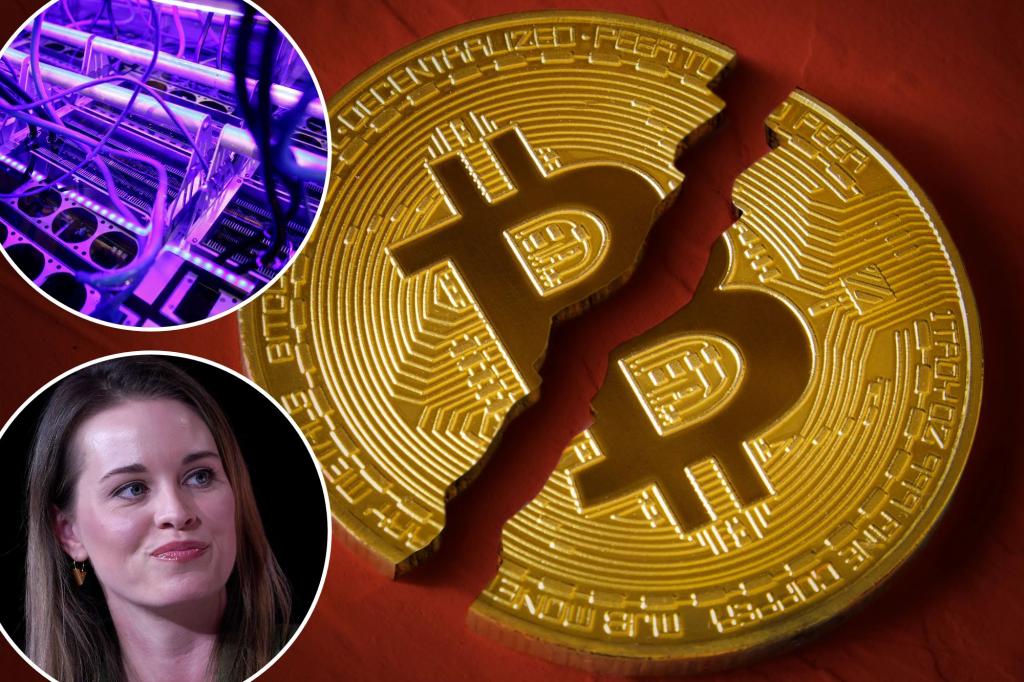Get ready, the Bitcoin ‘halving’ is coming

The Bitcoin network secures more than $1.4 trillion in value. That’s slightly less than the Taiwan Stock Exchange and slightly more than the market cap of Meta. Financial giants such as BlackRock and Fidelity recently launched exchange-traded funds (ETFs) so that everyday investors could add Bitcoin to their portfolios.
And in less than a week, this trillion-dollar juggernaut will undergo a routine — yet major — scheduled upgrade known as the halving, which in the past has fueled a massive rise in the price of Bitcoin, enriching those who hold it.
Could it happen again? There are reasons to be bullish.
Unlike traditional currencies, Bitcoin is not issued by a government or Central Bank, and so has no central authority pulling its strings. Instead, Bitcoin’s “monetary policy” is hardcoded into the software itself, meaning no state actor, corporation, or powerful individual can alter or mess with it.
Bitcoin has a capped supply at 21 million coins – the digital “coins” in “Bitcoin,” with about 19.5 million already in circulation. New Bitcoin is paid to participants known as “miners” who are rewarded for securing transactions and maintaining the network’s transaction ledger, also known as a blockchain.
Today the Bitcoin network produces and pays out to miners 6.25 Bitcoin every 10 minutes or so, or about 900 coins a day. The network is programmed to reduce the number of new Bitcoins emitted once 210,000 blocks have been mined, as a way to contain supply as the network matures.
It’s akin to how gold mining is less fruitful today than in the past as the easiest-to-access supply has already been pulled from the ground. And we are set to reach that mining milestone at or around April 20.
After the halving, the reward will drop to 3.125 Bitcoin, or about 450 a day. “This schedule was set in motion in 2009 and hasn’t veered off course,” said Mike Belshe, CEO of BitGo. For him, such predictability is “an amazing accomplishment that proves that Bitcoin is more trustworthy than ever.”
What’s more, the halving could cause a shortfall in the supply of available Bitcoin for sale, which could in turn squeeze the price a lot higher. Imagine if all the oil wells in the world suddenly produced only half as much crude as before, while demand held steady.
This explains why past halvings have provided fuel to Bitcoin’s march higher. When the last halving occurred in 2020, each Bitcoin was valued at around $10,000. In the two years that followed it hit a high of $67,000. The post-2016 halving rally was even more dramatic, with Bitcoin rising from $665 at the time of the halving to a high two years later of over $17,000.
This halving is set against the backdrop of ever-broadening demand for Bitcoin, driven by the popularity of new Bitcoin ETFs. Since January, Bitcoin ETFs have scored more than $11 billion in fresh capital, making them the most successful ETF launch in history.
The reaction to 2024’s halving could not only be more pronounced but also be more widely enjoyed as today nearly one-third of Americans own or are indirectly invested in Bitcoin, far more than during the last halving in 2020.
Bitcoin’s popularity has surged, with tens of millions of people relying on its security and simplicity — from migrant workers to the underbanked in the global South to folks who suffer from political oppression, not to mention a growing number of American savers and investors.
Perianne Boring, founder and CEO of the Digital Chamber, an advocacy group, said, “As people around the world grapple with the repercussions of rampant inflation, Bitcoin is emerging as a tool for individuals seeking refuge.” As more economic activity happens online than ever before, it makes sense that the digital economy should have its own digital store of value and medium of exchange.
What’s most remarkable about Bitcoin, however, isn’t just its popularity, but its functionality and reliability. Since its inception in 2009, the network has worked as designed 99.99% of the time. This helps explain why “the demand for new money coming into Bitcoin will far outpace the available supply of Bitcoin,” said Bill Barhydt, CEO of Abra.
While the potential impact of the halving is broadly positive for investors, there are reasons to be concerned that it may also weaken Bitcoin’s long-term security model. After all, Bitcoin relies on miners to commit huge computing resources to secure the network in exchange for the reward of more Bitcoin. What happens, after this halving, when that reward is reduced?
Miners’ costs won’t decrease, but their revenue might unless the Bitcoin price continues to march higher. If that doesn’t happen, miners could be forced to mothball their operations temporarily, or even shut down permanently as they wait out a return to increases in value.
Fewer miners will mean less computing power and a potentially more vulnerable and perhaps more concentrated network. And future halvings will surely amplify this concern.
For now, Bitcoin holders view this as an abstract problem to be solved at some later date. For today, they’re content watching as Bitcoin, arguably the boldest financial and technology project of our time, takes another big step forward.
Alex Tapscott is the author of the new book Web3: Charting the Internet’s Next Economic and Cultural Frontier, and Managing Director at Ninepoint Partners
Original Source
